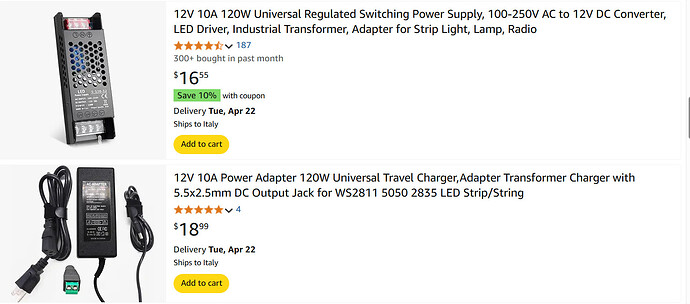No. It is only true for materials with a linear characteristic. That is to say it is only true for certain types of materials.
Take LEDs for example, it is not true at all that the current is linearly proportional to the voltage.
This is something I wrote quite a few years ago.
There seem to be two camps here,
- Ohms law is always true.
- Ohms law is not always true.
In fact the actual truth is:-
Ohms law is NEVER true
First off think what Ohm was trying to do. He was wanting some way of characterising the voltage / current relationship in a circuit. In other words for a given circuit how many amps per volt characterised the circuit. He did this by saying that "voltage is proportional to current" and anything that is proportional can be made into a equivalence by using a constant of proportionality. Hence
E = kI
Where E is the electro motive force measured in volts, and I is the current measured in Amps. The constant of proportionality k he gave to a constant which was called resistance, but it is just a constant of proportionality.
Where this is fundamentally wrong for ALL materials is that k is not a constant, meaning that resistance is NEVER a constant.
Sure for some materials it is close to a constant but it never is a constant. The truth is that what we call resistance is a function of many things, these things include, but are not exclusively limited to, temperature, voltage, current, frequency, atomic structure, and time.
Let's look at a case where most people think ohms law works. Take a lump of carbon, at low voltages and currents it is constant enough but it has a temperature coefficient, as does most materials. So it is only a constant at a fixed temperature. As you increase the current through it, it heats up and so the resistance changes. Therefore ohms law is not obeyed because the temperature change introduces a deviation from what would have been predicted at a lower current. Sure it is pretty dam good and well good enough for working with electronics, but it is not a fundamental law of physics and it does not hold.
The problem is that all real materials do not have a linear relationship between voltage and current. Take a gas for example, that has a very high resistance for small voltages. As the voltage increases the resistance stays quite constant until it reaches a point where the voltage is sufficient to start to remove electrons from the outer orbits of the gas molecules. This doesn't happen at a single voltage but is spread over a very small range. What happens is the normal thermal energy in the gas is added to the pull by the electric field it is in caused by the voltage. Sometimes this thermal force is in the opposite direction of the electric field and sometimes in the same direction. When it is in the same direction it combines with the electric field to detach an electron. When enough of these events happen electrons can pick up enough energy from the electric field to be involved in collisions with other molecules and help to dislodge them. All the time the resistance of the gas is dropping. A point will be reached when the gas breaks down and these collisions form a continuous discharge and the quantity we call resistance has dropped to a very low point. Clearly the voltage / current relationship is not constant and is very non linear.
So in conclusion for any situation you can think about resistance is never constant so ohms law is never true.
But for something that is never true it is very useful because it's deviation from true is so small it is not important, especially if it is applied correctly. That is for materials that exhibit a near constant resistance OR over a small enough section of the restive function that equates to a straight line.
